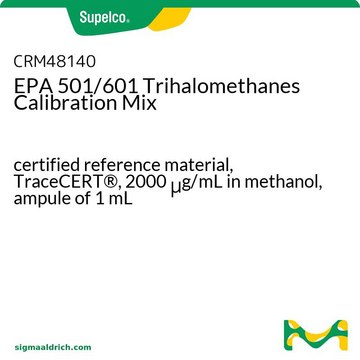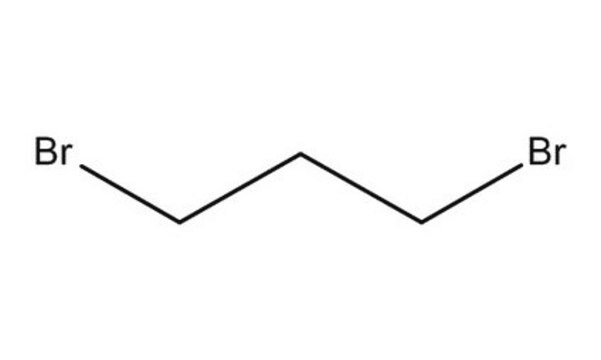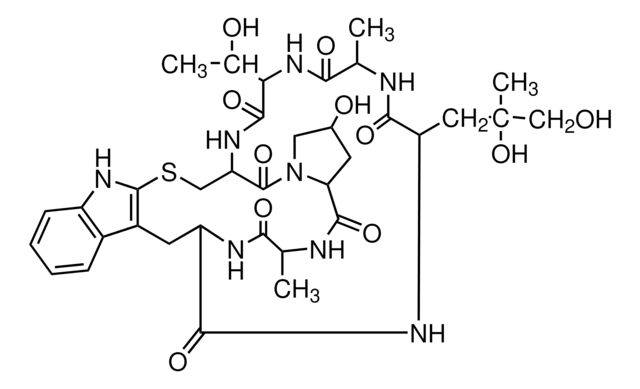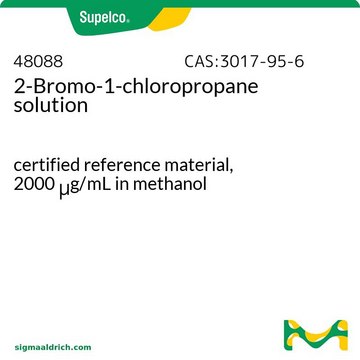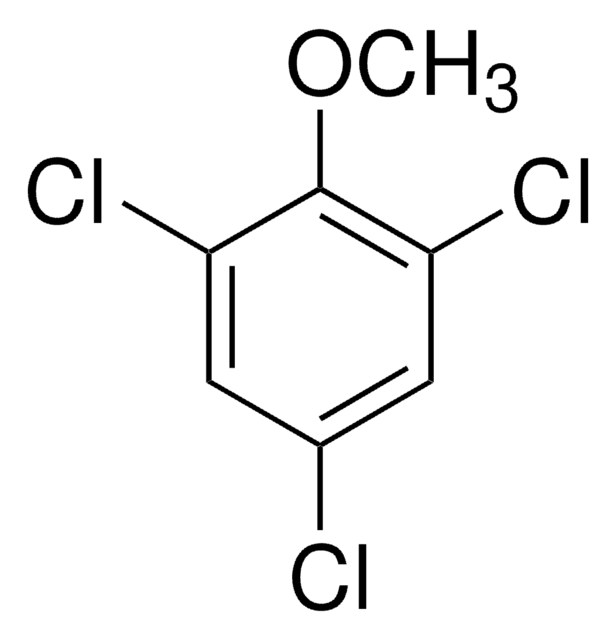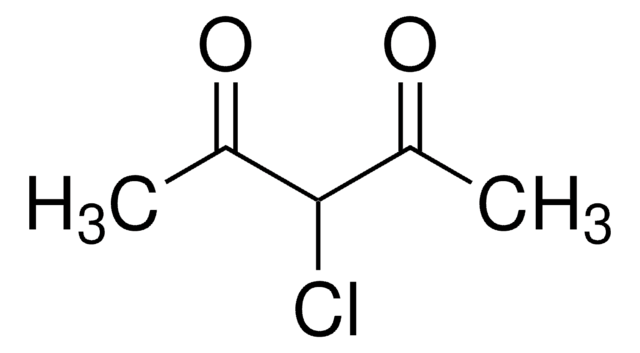Kluczowe dokumenty
140961
1,2-Dibromopropane
97%
Synonim(y):
Propylene dibromide
About This Item
Polecane produkty
Poziom jakości
Próba
97%
Formularz
liquid
współczynnik refrakcji
n20/D 1.519 (lit.)
bp
140-142 °C (lit.)
mp
−55 °C (lit.)
rozpuszczalność
organic solvents: miscible
water: slightly soluble
gęstość
1.937 g/mL at 25 °C (lit.)
ciąg SMILES
CC(Br)CBr
InChI
1S/C3H6Br2/c1-3(5)2-4/h3H,2H2,1H3
Klucz InChI
XFNJYAKDBJUJAJ-UHFFFAOYSA-N
Szukasz podobnych produktów? Odwiedź Przewodnik dotyczący porównywania produktów
Zastosowanie
Działania biochem./fizjol.
Hasło ostrzegawcze
Warning
Zwroty wskazujące rodzaj zagrożenia
Zwroty wskazujące środki ostrożności
Klasyfikacja zagrożeń
Acute Tox. 4 Inhalation - Acute Tox. 4 Oral - Aquatic Chronic 2 - Eye Irrit. 2 - Flam. Liq. 3 - Skin Irrit. 2
Kod klasy składowania
3 - Flammable liquids
Klasa zagrożenia wodnego (WGK)
WGK 3
Temperatura zapłonu (°F)
122.0 °F - closed cup
Temperatura zapłonu (°C)
50 °C - closed cup
Środki ochrony indywidualnej
Eyeshields, Faceshields, Gloves, type ABEK (EN14387) respirator filter
Wybierz jedną z najnowszych wersji:
Masz już ten produkt?
Dokumenty związane z niedawno zakupionymi produktami zostały zamieszczone w Bibliotece dokumentów.
Klienci oglądali również te produkty
Nasz zespół naukowców ma doświadczenie we wszystkich obszarach badań, w tym w naukach przyrodniczych, materiałoznawstwie, syntezie chemicznej, chromatografii, analityce i wielu innych dziedzinach.
Skontaktuj się z zespołem ds. pomocy technicznej
